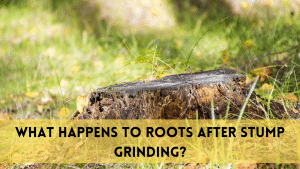Yellowing of Palm Leaves
Have you ever walked past a lovely palm tree, its leaves shining in the sunlight, only to discover that sections of its lush, green fronds have started to turn an unsightly shade of yellow? If so, you’ve probably seen it before. Any person who is passionate about plants is likely to find this a distressing everyday occurrence. In this piece, we’ll investigate yellowing of palm leaves and discuss some things you can do to bring back the vibrant foliage on your palm tree.
What factors contribute to the yellowing of palm leaves?
The yellowing of palm leaves is an outward manifestation of deeper issues that exist inside the plant itself. This occurrence may be traced back to a number of factors, however the following are some of the more common ones:
Insufficiencies in Essential Nutrients: The yellowing of palm leaves may often be traced back to deficiencies in essential nutrients. To flourish, palms, like all other types of plants, need a nutritious diet that has all of the necessary components. The green hue of their leaves is lost when nutrients such as nitrogen, potassium, or magnesium are in short supply in their bodies.
Palms have a delicate relationship with water that might include either overwatering or underwatering. Underwatering a plant prevents it from receiving the adequate amount of moisture needed to maintain healthy leaves, while overwatering may lead to root rot and suffocation. In any event, the fronds could become a yellowish color.
Infestations of Pests It’s possible that your palm tree may get infested with pests such mealybugs, spider mites, and aphids, which will result in the destruction and discoloration of its leaves.
Insufficient Light: It is common knowledge that palm trees thrive best in bright, sunny environments. If they do not get a enough amount of light, the leaves on their plant will go yellow and lose their vibrant green color.
The discoloration of palm leaves may also be caused by diseases, such as bacterial and fungal infections. Because of these illnesses, the plant is unable to photosynthesize as well as it should.
Taking Care of the Issue Palm Leaves Turning Yellow
Now that we’ve discovered some of the most common causes of yellowing palm leaves, let’s have a look at how to fix these problems and restore your palm tree to the grandeur it once had.
Provision of the Appropriate Nutrients: It is of the utmost importance to make certain that your palm tree is provided with the appropriate nutrients. It is possible to promote general health and address nutritional deficiencies with the use of specialized palm fertilizers.
Techniques for Watering: Be sure to water your palm tree well, but also check that there is enough drainage in the soil to prevent the roots from rotting. It is essential to water the plants on a regular basis.
Insect Control: Examine your hand on a daily basis for signs of various kinds of insects and other pests. In the event that you discover uninvited visitors on your hand, you should treat it with pesticides or soaps that kill insects.
Lighting: To get the best possible lighting, position your hand so that it is exposed to an adequate amount of natural light. Always keep in mind the specific light requirements of each variety of palm you have.
Disease Management: If you have any reason to believe that a disease is present, you should see a specialist or use the right fungicides to treat the issue. The removal of unhealthy fronds by pruning may also help prevent the spread of disease.
An Effective Analysis of the Case: Preserving Susan’s Palm Tree
Let’s have a look at Susan’s story to learn how to bring a sick palm tree back to life and maintain its health. Susan’s living room had a gorgeous Areca palm, but she noticed that the leaves of the plant, which had previously been a brilliant green, were becoming yellow. Because she was worried about her prized plant, she took the necessary steps to protect it.
Susan’s first step was to adjust the frequency of the watering program. She became aware that she had been overwatering the palm, which had led to the development of root rot. Between waterings, she let the soil become dry for a little while, which assisted in the healing of her palm tree.
After that, Susan moved her Areca palm to a place in her home that received more natural light. The plant’s overall health improved as a result of more exposure to natural light, and the color of the plant’s leaves started to change back to its original vibrant shade.
In addition, Susan gave the plant a thorough inspection, which led her to locate a few mealybugs hiding among the fronds. She used an all-natural spray made of neem oil to get rid of the insects, which helped reduce the amount of damage done to the plant’s leaves in the process.
Over the course of time, Susan’s Areca palm was able to recuperate, and its leaves eventually reverted to their natural, beautiful shade of green. She made the amazing discovery that a palm tree in distress may be saved with the right amount of care, attention to detail, and a little bit of love.
Related Posts:
FAQs
What might be causing the fading of the leaves on my palm tree?
The yellowing of palm leaves may be caused by a variety of factors, including an absence of essential nutrients, excessive or inadequate watering, insect infestations, a lack of light, or sickness. In order to provide the most effective treatment, it is necessary to determine the specific cause.
How can I detect whether my palm needs more or less water?
That’s the second question. Determine how much water your palm needs by checking the moisture level of the soil around it. Put your finger down into the ground roughly one inch deep. If it seems to be dry at that depth, it is time to water it. If it is still moist, you should hold off on watering it for a little while longer.
To remedy the nutritional inadequacies that my palm tree is suffering from, what sort of fertilizer can I apply to it?
Palm fertilizers that have a balanced ratio of nitrogen, phosphorus, and potassium, as well as micronutrients like magnesium and manganese, are appropriate for use in the treatment of nutritional deficiencies. These fertilizers have been developed specifically to satisfy the requirements that palm trees have.
How can I prevent common pests like mealybugs and spider mites from infesting my palm?
You should do routine checks to ensure that your hand is free of insects. Make use of insecticidal soaps that include neem oil in order to eliminate infestations. It is possible that maintaining a clean growing environment and pruning damaged fronds would help keep pests at bay.
Is it too late to save a palm tree if its leaves have started to turn yellow?
The answer is that in many instances, fixing the underlying issue may be able to save a palm tree that has yellow leaves. It is possible that the green color of the palm’s leaves may return when the proper care has been performed, which includes managing the amount of water used, addressing any deficiencies in the plant’s nutrition, and dealing with any pests or illnesses.
Conclusion
In the realm of indoor and outdoor gardening, the issue of palm leaves becoming yellow is rather uncommon. Having said that, it is essential to be aware of the fact that this phenomenon is often an indication of a more fundamental problem rather than the issue itself. You may bring back to life your palm tree and restore the lush, green foliage it once had if you first identify the root cause of the issue and then take the required measures to fix it. Keep in mind that you need to provide your palm with the appropriate nutrients, that you should only water it sparingly, that you should prevent it from pests, that you should maintain perfect lighting conditions, and that you should treat any ailments as soon as possible.




